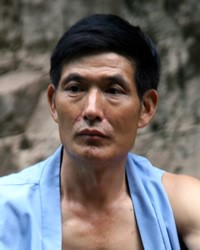Tujia in China

Photo Source:
Terry Feuerborn - Flickr
Creative Commons
|
Send Joshua Project a map of this people group.
|
| People Name: | Tujia |
| Country: | China |
| 10/40 Window: | Yes |
| Population: | 9,588,000 |
| World Population: | 9,588,000 |
| Primary Language: | Chinese, Mandarin |
| Primary Religion: | Ethnic Religions |
| Christian Adherents: | 1.10 % |
| Evangelicals: | 1.00 % |
| Scripture: | Complete Bible |
| Ministry Resources: | Yes |
| Jesus Film: | Yes |
| Audio Recordings: | Yes |
| People Cluster: | Tibeto-Burman, other |
| Affinity Bloc: | Tibetan-Himalayan Peoples |
| Progress Level: |
|
Introduction / History
The Tujia, whose name means "natives" or "original inhabitants," are one of China's officially recognized nationalities. Most Tujia today are ethnically indistinguishable from the Han Chinese. The vast majority have been assimilated since the Ming Dynasty (1368-1644) when they were sent as soldiers to fight Japanese pirates on the east coast of China.
Tujia or "The People," consider themselves, "the aboriginal people." Yet this "original people," has significantly assimilated into the surrounding peoples since the 16th century, so that today only a few speak Tujia. Most speak Chinese or the local dialect of Ghao-Xong. Speakers of Tujia are concentrated mainly in the Youshuihe, Mengdonghe, and Xichehe river areas of the Xiangxi Prefecture in Hunan Province. In these areas education is conducted in the Tujia language until the third grade; after that, Mandarin is used. It is possible the Tujia once possessed a script which may have been lost as they assimilated to Chinese culture. In 1890 the British Consul Borne discovered a document in an unknown script. Borne was located at Tchong-Kiu - present day Zhong County in eastern Sichuan - north of the Tujia area. The speakers of Northern Tujia call themselves Bizika, while Southern Tujia speakers call themselves Mozhihei.
There are several theories about the origin of the Tujia. Some say they are the descendants of the ancient Ba tribe. Many Tujia still call themselves Ba. By the early 900s the Tujia were already recognized as a distinct people group in western Hunan.
What Are Their Lives Like?
One of the common motifs on Tujia embroidery is the bull's eye. This refers to a Tujia legend, which relates how one autumn day a herd of bulls was attacked by a tiger while grazing on a mountain slope. "At first sight of the tiger, the bulls were startled, even frightened, but they soon regained their composure. The bulls then charged at the tiger, which fled in panic. To this day the Tujia regard the bull's eye as a symbol of the victory of good over evil. Other common motifs include the snake and the white tiger since these were the totems of the Ba tribe."
What Are Their Beliefs?
They believe in an original "First Couple," Fuxi and Nuna, whose spirits they invoke in exorcism. The Tujia of Guizhou practice nuo (exorcism) ceremonies. The Tujia evoke the spirits of Fuxi and Nuwa - the first human beings according to Chinese legend. The ceremony includes supernatural feats such as climbing ladders of sharp knives and walking on hot coals or glass.
Roman Catholic and Protestant missionaries first entered Tujia areas with the gospel near the end of the nineteenth century and established a small number of churches, schools and medical clinics among the Tujia. Today it is estimated that there are between 13,000 and 30,000 Tujia Christians, a tiny proportion for such a large group.
Prayer Points
Pray for a complete harvest of Tujia souls for Jesus Christ.
Pray for the Holy Spirit to move among Tujia family leaders.
Pray for family-based Bible studies.
Pray for Tujia disciples who will make more disciples no matter what the cost.